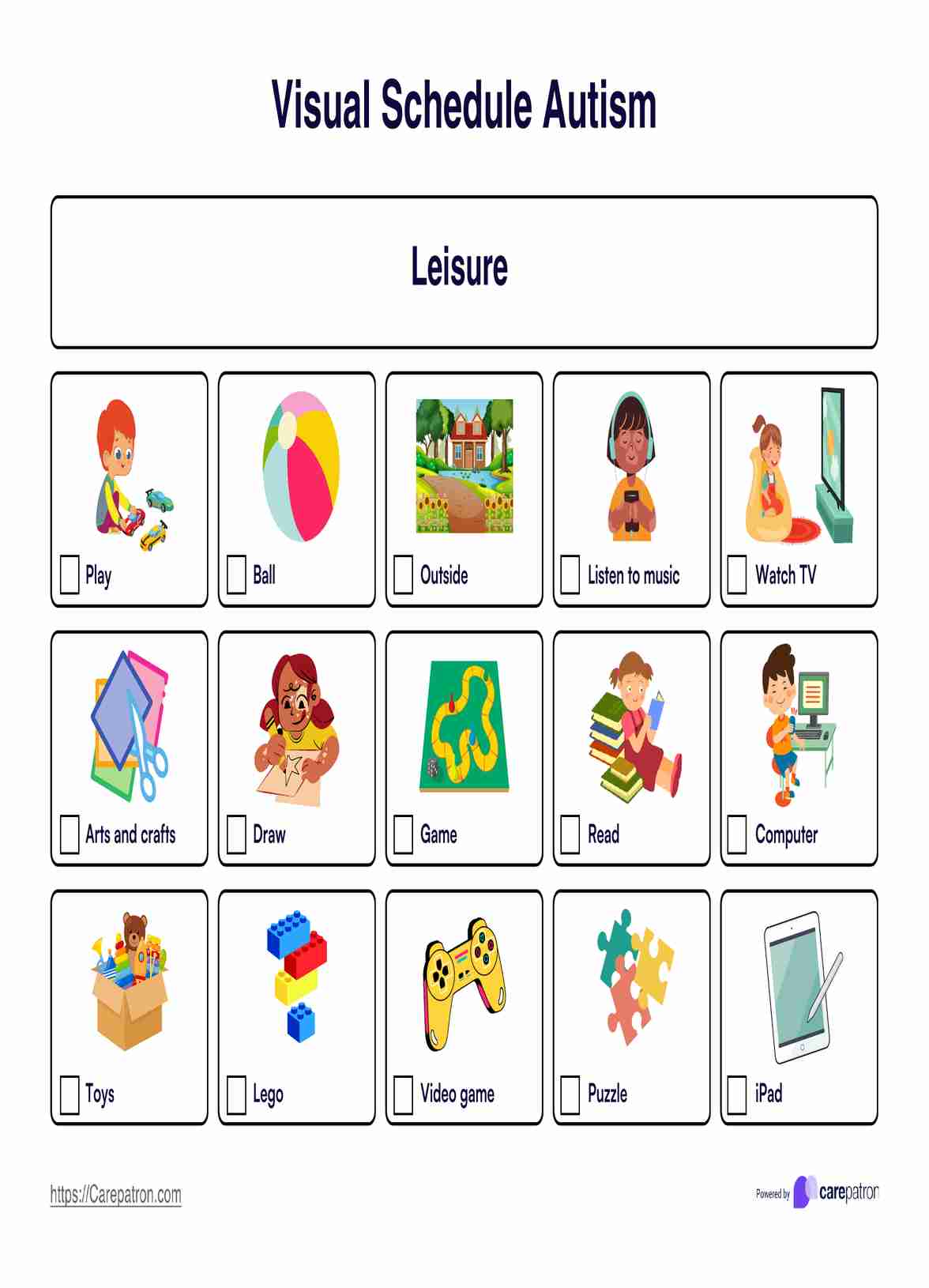Visual schedules provide a clear, predictable structure for individuals with autism, reducing anxiety and promoting independence.

Visual Schedule Autism
Enhance daily routines with our Autism Visual Schedule Template, promoting independence and reducing anxiety.
Use Template
Visual Schedule Autism Template
Commonly asked questions
Choose daily activities, routines, and transitions, using pictures, symbols, or words that are understood by the individual.
Numerous online resources and autism organizations offer free, customizable templates to get you started.
EHR and practice management software
Get started for free
*No credit card required
Free
$0/usd
Unlimited clients
Telehealth
1GB of storage
Client portal text
Automated billing and online payments











